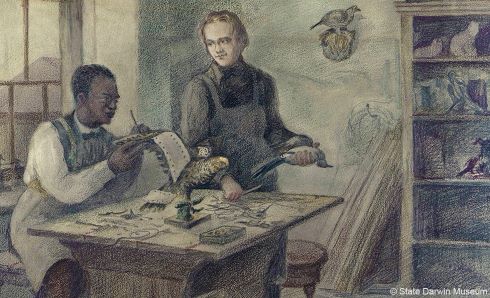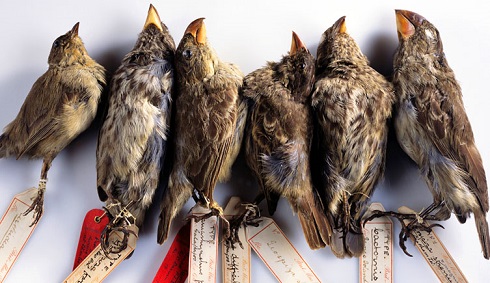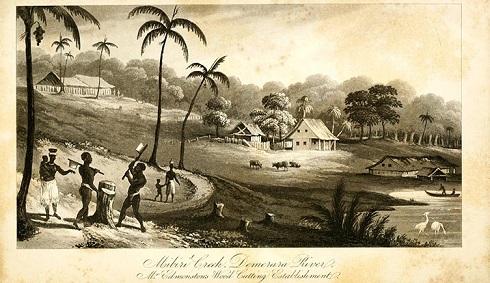Black History Month: John Edmonstone, Darwin’s unsung taxidermy tutor

Illustration (above) courtesy of the State Darwin Museum, Moscow.
As part of Black History Month, The Biologist explores the vital contribution of John Edmonstone to the most famous scientific theory in biology
October 5th 2022
The story of Charles Darwin and his finches is one of the best known in all of science. But less well known is the story of how it was a freed Black slave that taught Darwin the taxidermy skills that set him on track to become the world’s most celebrated naturalist.
In 1825, a 16-year old Charles Darwin arrived at Edinburgh University to study medicine. After struggling to sit through the gruesome dissections and live surgeries required for his studies, his passions moved towards natural history. Darwin’s lodgings at the time were at 11 Lothian Street, just a few roads over from the university. Down the road, at No 37, a man called John Edmonstone had recently set up a shop to sell stuffed birds and teach taxidermy to students. As Darwin’s enthusiasm for medicine waned, he decided to take lessons from Edmonstone – “I am going to learn to stuff birds,” he wrote in a letter to his sister. “It has the recommendation of cheapness, if it has nothing else.”
 A selection of preserved finches collected by Charles Darwin from the Galapagos Islands. Image courtesy of the Natural History Museum.
A selection of preserved finches collected by Charles Darwin from the Galapagos Islands. Image courtesy of the Natural History Museum.Even before he met Charles Darwin, John Edmonstone’s life had already been remarkable – a globe-spanning and tragic reminder of the horrors of nineteenth century colonialism. For much of his life he had been enslaved on a timber plantation in Demerara (Guyana) in South America. His birth name unknown, or erased, he had been given the name John Edmonstone after the plantation’s Scottish owner, Charles Edmonstone.
An eccentric naturalist called Charles Waterton often visited the plantation during his journeys through South America, and would take John on his collecting expeditions through the region. Edmonstone was responsible for quickly preserving the birds shortly after they were caught, using cutting-edge new techniques developed by Waterton.
When the plantation’s owner returned to Scotland in 1817, he bought John with him. Owning slaves in Scotland was by then illegal, and accounts differ on whether Charles Edmonstone bought John over to liberate him from the plantations, or whether John had to buy his freedom from Charles in Scotland.
What’s clear is that within a few years, Edmonstone had his own business – selling stuffed birds, stuffing specimens for Edinburgh’s museums and teaching students from the university. Taxidermy was big business at the time – with demand for specimens from naturalists and as fashionable ornaments for the wealthy. Darwin took lessons from Edmonstone every day for two months, and later remarked that they would often sit and talk further – “for he was a very pleasant and intelligent man.”
Not only did Edmonstone teach Darwin the preservation techniques that would help him on his famous travels on the HMS Beagle years later, he surely told his student all about the remarkable species in Guyana and South America, where Darwin would later conduct extensive surveys. Hundreds of the specimens that Darwin collected on his travels were bird skins, including the mockingbirds and finches from the Galapagos that help him develop and illustrate his burgeoning theories of evolution by natural selection.
 An image of the plantation in Demerara (now Guyana) where John Edmonstone was enslaved.
An image of the plantation in Demerara (now Guyana) where John Edmonstone was enslaved.The preservation techniques Darwin used throughout his career were undoubtedly taught to him by Edmonstone – but it is entirely possible that Edmonstone played an even larger role in inspiring Darwin to explore and study the natural history of the tropics in the first place. Who knows – perhaps without John Edmonstone, Charles Darwin might just be another mediocre nineteenth century medical student.
In 2009 a plaque was placed at 37 Lothian Street commemorating the life and achievements of this extraordinary Black naturalist and his largely uncelebrated contributions to arguably the most famous scientific theory in history.
Tom Ireland is editor of The Biologist
John Edmonstone: Enslaved Man to (free as a) Bird-Stuffer.
McNish, J: John Edmonstone: the man who taught Darwin taxidermy. Natural History Museum London’s Collections blog.


